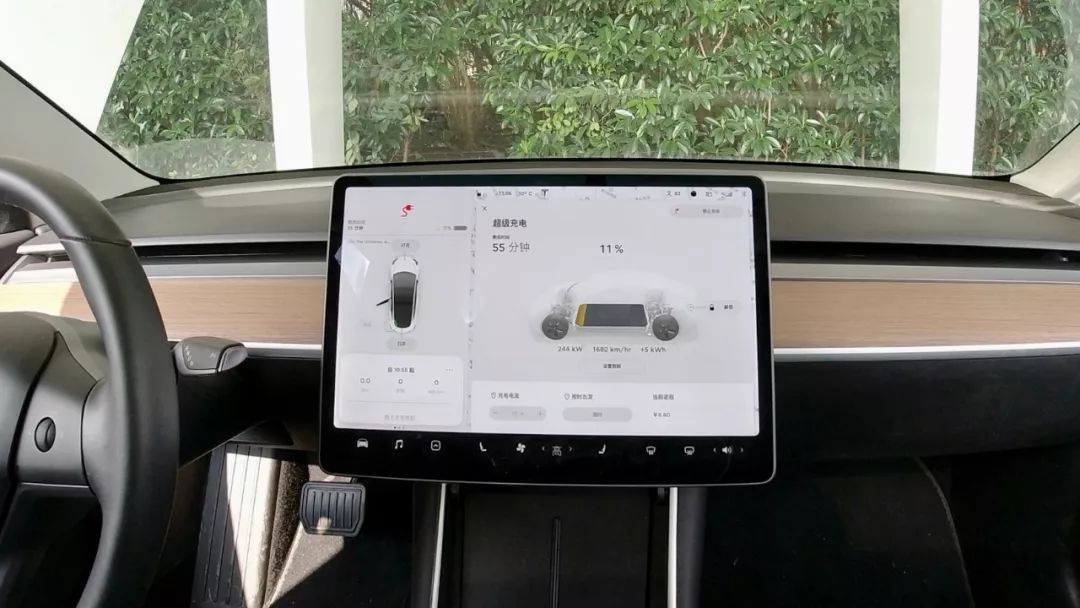On December 27th, 2019, Tesla’s first V3 supercharging facility in China was officially opened, marking a new level of efficiency of Tesla’s replenishing energy capacity.
When I plugged in the charging cable, the charging power displayed on the car’s screen surged from 120 kW all the way up to 245 kW!
This is currently the fastest charging speed for an electric vehicle, and at this rate, it only takes ten minutes to add 220 km of range to a long-range rear-wheel drive Tesla Model 3!
Let’s begin with the most frequently asked question on Weibo and our WeChat group.
Can Model S/X achieve a power of 250 kW on V3?
No, it cannot.
Currently, only the long-range version of the Model 3 can achieve a maximum charging power of 250 kW among Tesla’s mass-produced vehicles.
- The standard Model 3 has a maximum charging power of 170 kW on V3.
- The new (updated with Raven motor) long-range Model S/X has a maximum charging power of 200 kW on V3.
- The old Model S/X 100D has a maximum charging power of 150 kW on V3.
(Updated on August 7th, 2020: Model S/X produced after June 2020 can achieve fast charging of 250 kW, while those produced before June 2020 can only support a charging power of 200 kW.)
The reason for the difference in peak charging power between the standard and long-range versions of Model 3 lies in battery capacity.
The actual usable capacity of the long-range Model 3 is around 75 kWh, while the upgraded standard-range Model 3 has a battery capacity of around 54 kWh.
To use a simple example, a larger battery capacity means a larger bottle, while a smaller battery capacity means a smaller bottle. When filling a larger bottle, we can turn on the tap to the maximum flow rate, but when filling a smaller bottle with the same flow rate, the bottle is likely to overflow. To prevent overflow, the flow rate will naturally be reduced when filling the smaller bottle, and as the water in the bottle increases, the flow rate will also decrease to avoid overflow.
This is the principle behind the change in charging speed.
In summary, under the same conditions, the larger the battery capacity, the higher the charging power.
The reason why Model S/X cannot achieve a charging power of 250 kW lies in the type of battery, as Model S/X uses 18650 battery cells, while Model 3 uses 2170 battery cells. The chemistry of 18650 batteries limits them, hence they cannot achieve the peak charging power of 250 kW on V3.## How much faster is V3 compared to V2? How can I maximize the power of V3?
According to our tests, a long range rear-wheel drive Model 3 can charge from 10% to 90% at a V3 Supercharger in just 35 minutes, which is 13 minutes faster than V2.
In other words, it only takes 35 minutes to charge a long range rear-wheel drive Model 3 with an EPA range of 410+ km at a V3 Supercharger.
For a more commonly used charging interval of 20% to 80%, V3 only takes 22 minutes, while V2 takes 32 minutes, meaning V3 is 10 minutes faster than V2.
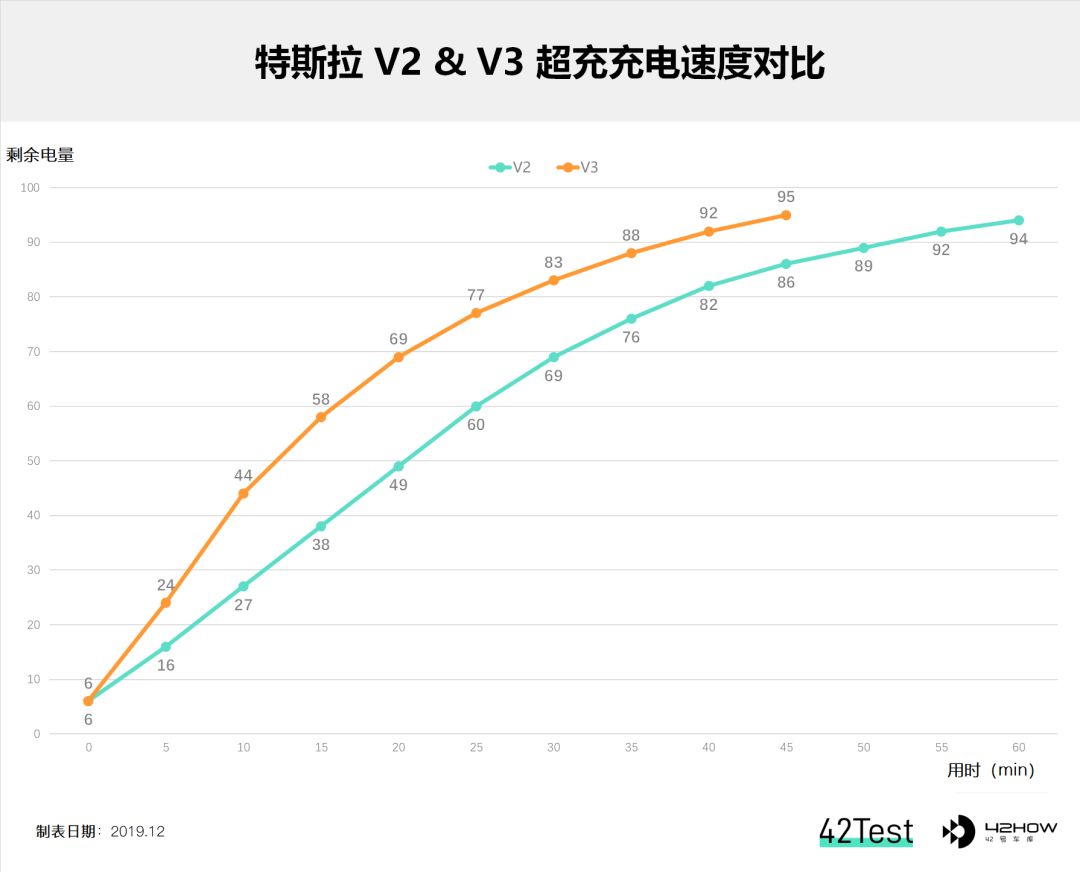
After seeing the charging time difference, let’s take a look at the power changes of V3.
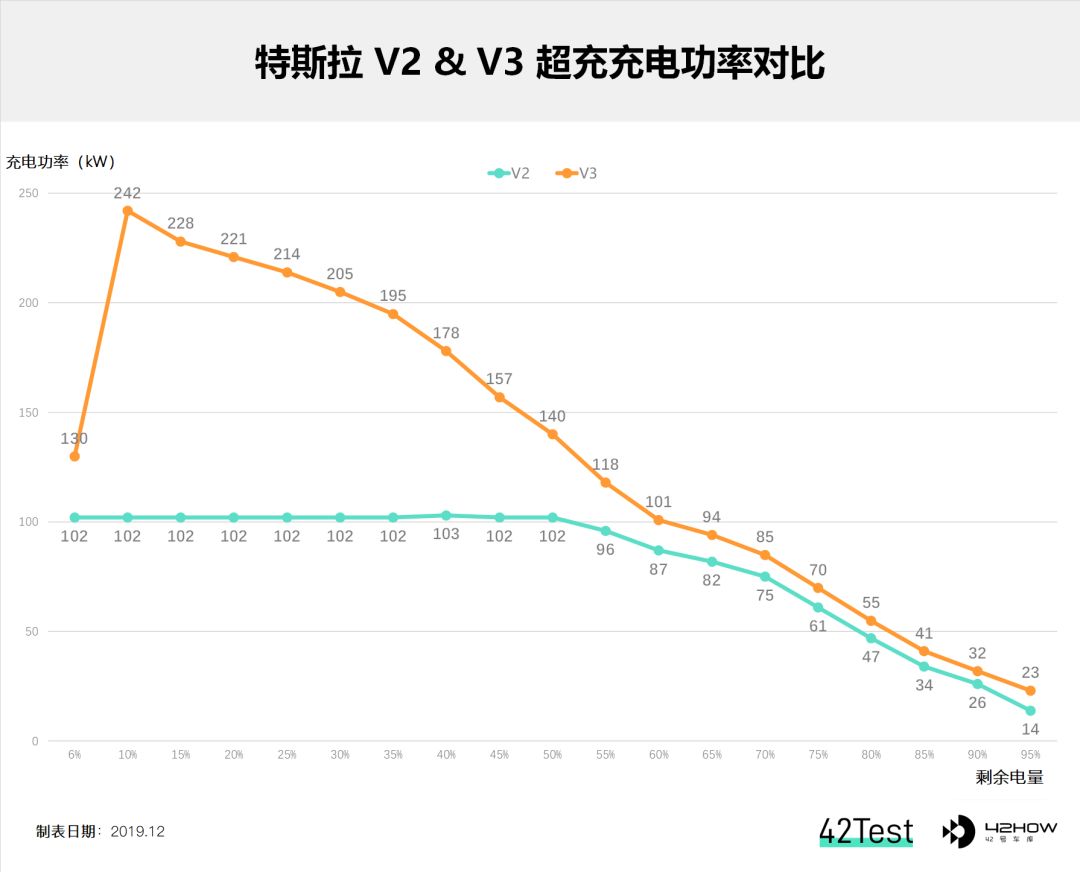
When we start charging, the remaining battery level of the vehicle is 4%. Once the charging cable is plugged in, the charging power immediately reaches 120 kW, and when the remaining battery level reaches 11%, the charging power climbs to 245 kW before beginning to decrease.
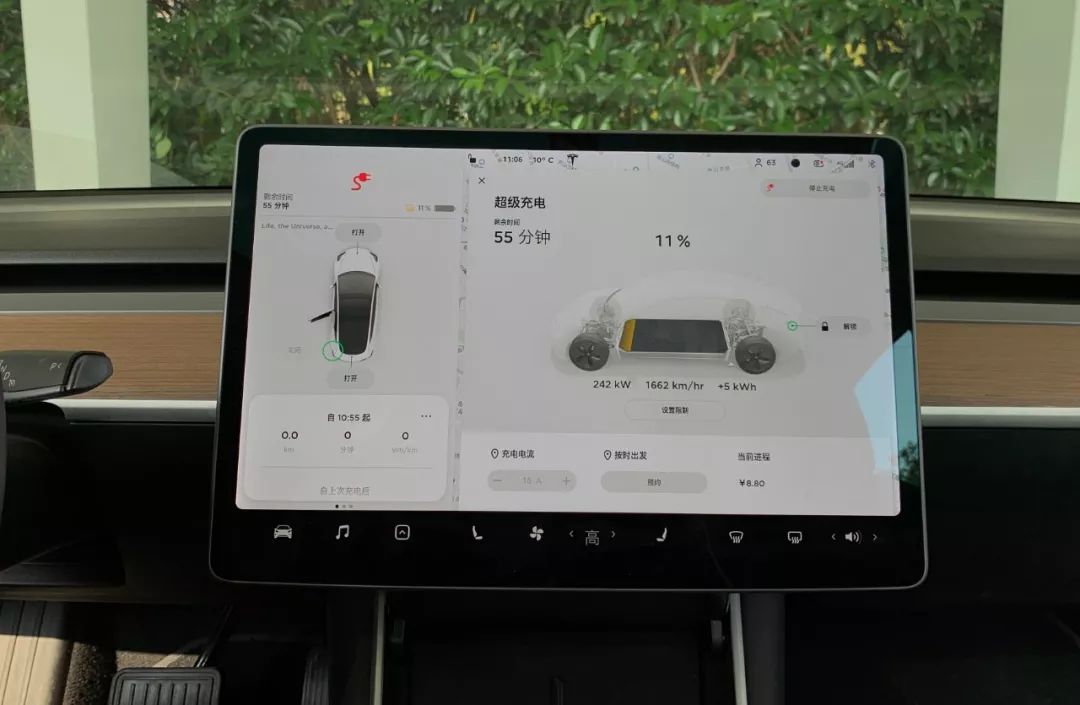
When the battery level exceeds 55%, the charging power drops to 118 kW. Therefore, theoretically speaking, there is no difference in charging speed using V2 and V3 Superchargers when the battery level is above 55%, and V3 is faster mainly when the battery level is low.
If you want to experience the charging speed of V3 Superchargers at 250 kW, you must make sure that the remaining battery level is low enough.
In addition to requiring a low battery level, the battery must also reach an appropriate charging temperature. Today, @电池王 experienced V3 Supercharging, but unfortunately, despite starting charging at 4%, the peak charging power only reached 199 kW, possibly due to a low battery temperature preventing the maximum power output.
Therefore, Tesla has introduced the “on-route battery preheating” function, which is introduced on the official website as follows:> New supercharging infrastructure is not the only way we’re improving the charging experience for our customers. This week, Tesla is introducing a new feature called On-Route Battery Warmup. Now, whenever a user navigates to a Supercharger station using their vehicle’s navigation system, their vehicle will intelligently preheat the battery to ensure the battery temperature is within the optimal range for charging upon arrival, reducing the average charging time by 25%.
So, before heading to a Supercharger station, users can set the destination in the vehicle’s navigation system and the vehicle will automatically heat up the battery during the drive to improve charging efficiency.
Other than charging speed, what are the differences between V2 and V3?
There are two differences:
Cable
The appearance of Tesla’s V3 and V2 Superchargers is generally the same, with the only difference being in the charging cable and handle – the only way to distinguish between the two.
Tesla achieves high-power output on the equipment side by significantly increasing the current on the basis of the original voltage. In order to ensure that the cable can withstand such high currents without overheating, Tesla has switched to liquid-cooled cables for V3 Superchargers.
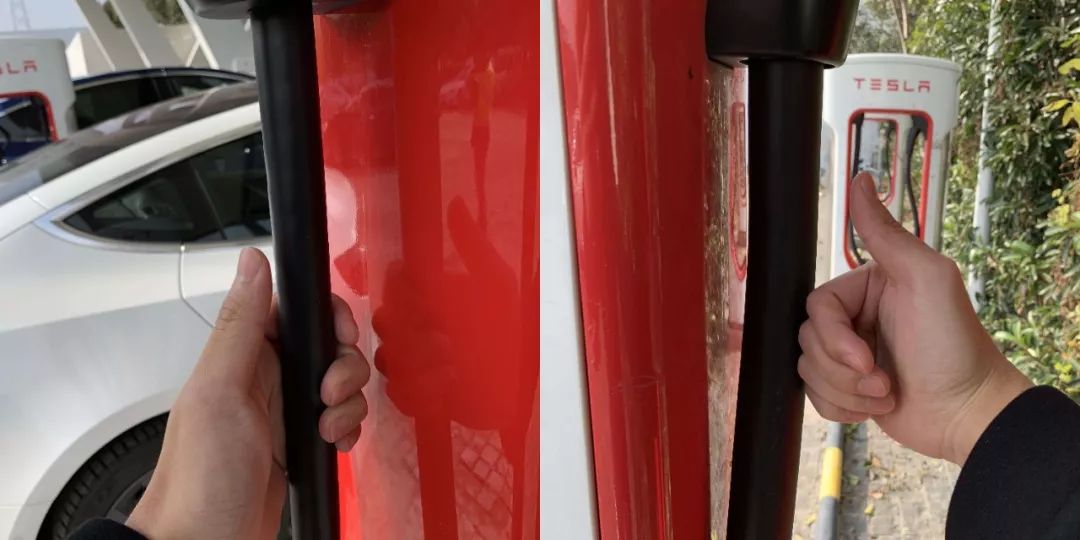
There are two advantages of the new liquid-cooled cables:
- Compared to the V2 cable, the cable is much thinner, making it easier to use.
- It can well control the temperature of the cable during charging. In the summer, I have encountered situations where the power of V2 Superchargers was decreased due to overheating of the cable. With the new liquid-cooled cable of V3, the temperature of the cable before and after charging has not changed much.
To add a little bit more, Tesla’s Supercharger stations have been upgraded to the national standard DC charging port at the end of 2017. However, due to lack of inter-communication protocol, Tesla Superchargers can only charge Tesla-owned models.
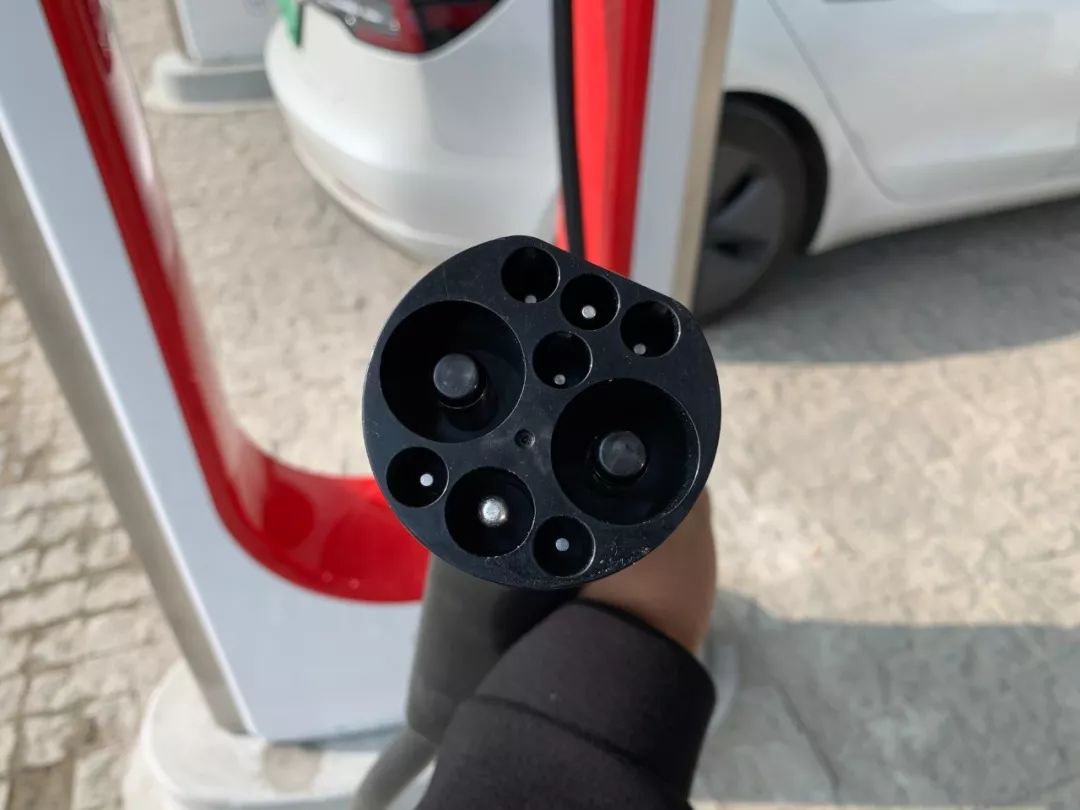
Charging speed
Two stalls of V2 Superchargers make one unit. The total power for each unit is 132 kW (145 kW in foreign countries), and the peak power of each stall is 120 kW. When two stalls are charging simultaneously, the first one can achieve a charging power greater than 80+kW, and the second one can achieve a charging power of 60+kW.
However, with V3 Superchargers, each stall can achieve a charging power of up to 250 kW individually!From the V3 supercharging stations built in multiple places around the world, it can be seen that the V3 layout uses a 1MW rectifier cabinet corresponding to four charging piles, and each charging pile can enjoy 250 kW of power.
There is no need to worry about power sharing, as it is pretty cool to get full power charging right after arriving at the charging station. However, considering the duration of the peak power, the layout of 1 MW dragging four piles is somewhat wasteful.
Furthermore, the first open V3 supercharging station in China is located at the Tesla Jinqiao Service Center in Shanghai. Among the 12 charging piles, only three are V3 superchargers, so be sure to identify them.
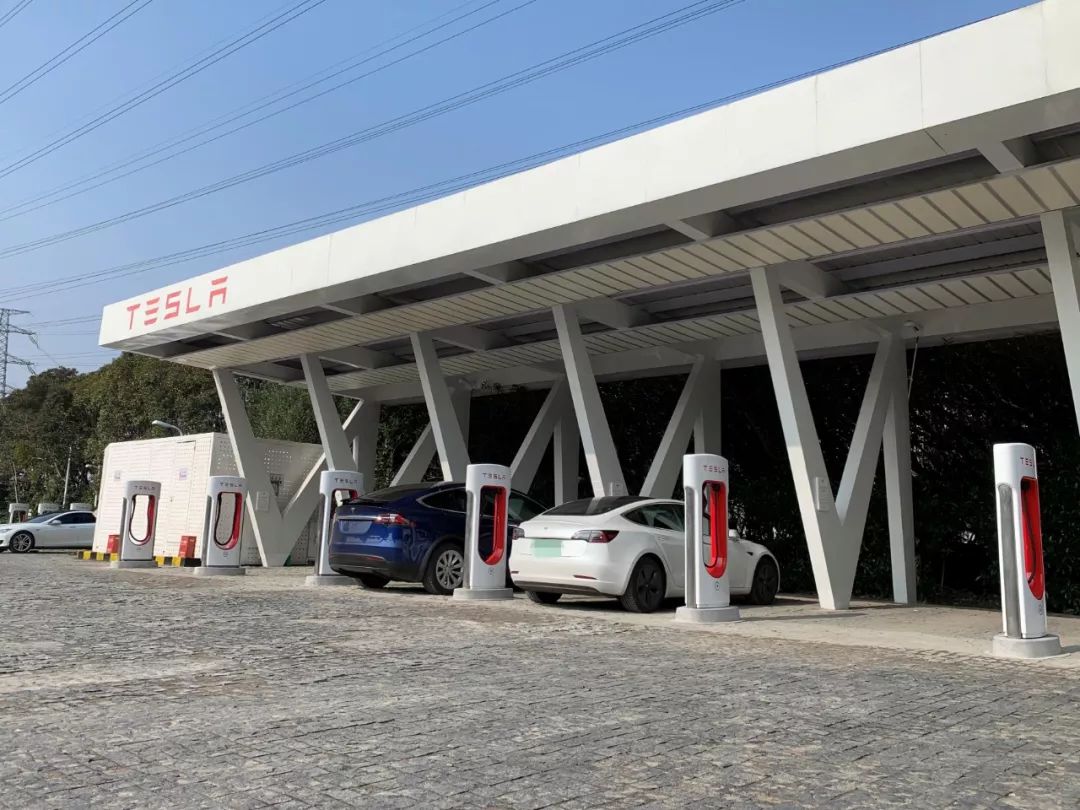
What’s the significance of V3?
After posting the comparison between V2 and V3 charging speeds this morning, some readers still think that the time taken for V3 to reach peak power is too short, and the difference is not significant.
So, let’s look at this issue from two perspectives.
First, the improvement in practical terms is significant.
Referring to the data mentioned above, V3 has already compressed the 10-90% charging time to 35 minutes. Filling up 400+ km of real range in 35 minutes is a level that many consumers can accept for electric cars. Even if there is an emergency, 70% charging can be achieved in 20 minutes at the V3 station.
Secondly, next year will be the time to unleash the potential of V3.
When the new high-capacity 2170 battery cells are equipped on Model S/X next year, and Model 3 launches the 100 kWh high-capacity battery version, Tesla can still achieve 20 minutes of charging to 70%, but the corresponding range can be increased to over 400 km.
When the range of electric vehicles reaches over 600+ km, what causes range anxiety is not just the single range, but the corresponding energy replenishment system. Tesla’s V2 supercharging speed is already ahead of many pure electric vehicles on the market, and the launch of V3 has taken Tesla to the next level in terms of energy replenishment.
After the large-scale rollout of V3 supercharging stations next year, is long-distance travel in an electric vehicle still challenging?
This article is a translation by ChatGPT of a Chinese report from 42HOW. If you have any questions about it, please email bd@42how.com.
